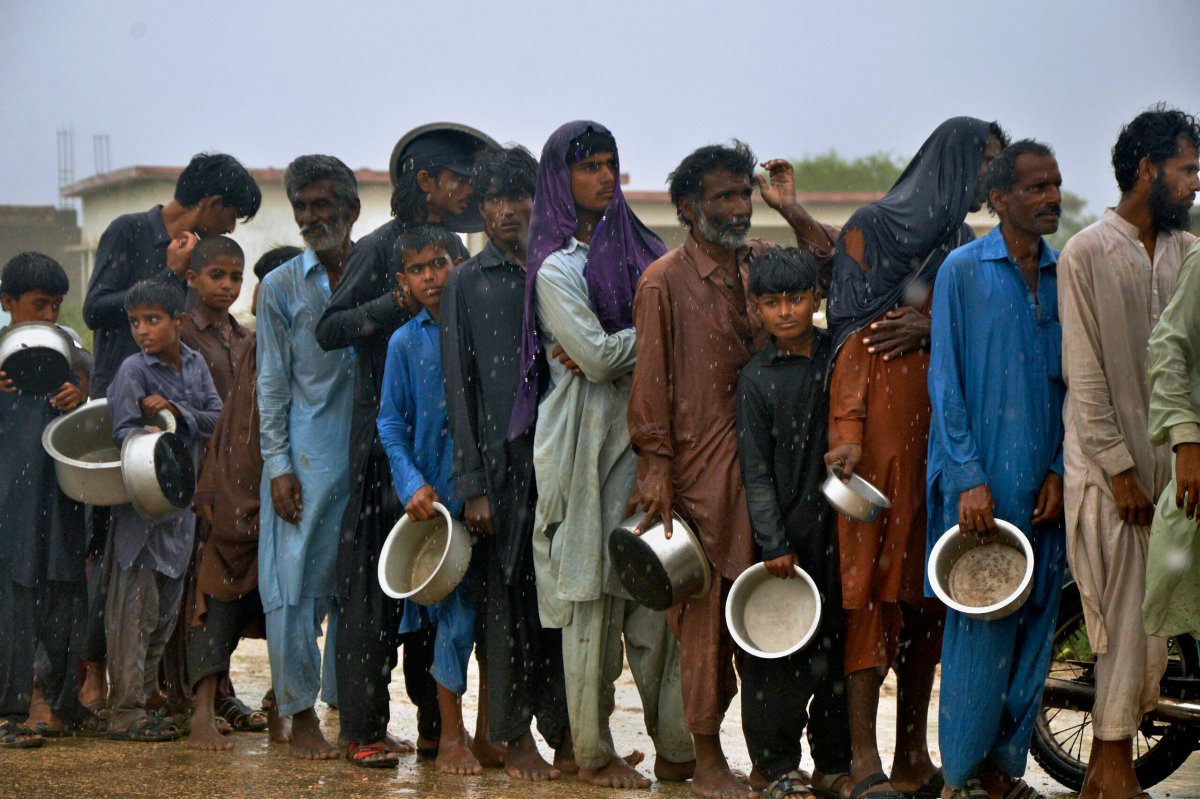MANDVI, India (AP) — Wind-driven rain pelted the shores of western India and southern Pakistan as Cyclone Biparjoy pushed into the coast with the potential for a significant storm surge and flash floods from heavy rain.
The two nations had moved 173,000 people to shelters ahead of the cyclone, and preparations were made to provide water and maintain communications after the storm passed. Pakistan’s southern province in Sindh, devastated by floods last summer, lies in the cyclone’s path.
During the day Thursday, skies darkened along the Arabian Sea, while dust storms hampered evacuation and rescue work on land. Biparjoy had maximum sustained winds of 120 kph (75 mph) with gusts up to 140 kph (86 mph) and was forecast to weaken as it moved into India’s Gujarat state.
In India’s Kutch district, near Jakhau port where the cyclone made landfall, authorities were expecting significant sea surge. Keti Bandar in Pakistan’s Sindh province also lies in Biparjoy’s path. The cyclone was forecast to move into Pakistan’s southern coastal areas by midnight.
The bazaars and beaches in Mandvi, India, usually a bustling coastal town known for its wooden boat-makers, were deserted Thursday under government shutdown orders. Heavy winds and rains already had uprooted some trees in the area.
Amid dust storms and rain, displaced families were visibly shocked at relief camps in southern Pakistan. One of the evacuees, 82-year-old Bachai Bibi from Badin district in Sindh province, said “I don’t know what will happen to my home.”
Mohammad Ashraf, 35, said local officials helped him, his wife and three children escape from the Pakistani village of Sheikh in the storm zone.
In India, 100,000 people went to relief camps to wait out the storm. In Pakistan, 73,000 people have been evacuated to safer places where authorities were providing them with shelter and food, said Lt. Gen. Inam Haider Malik, head of the National Disaster Management Authority.
Pakistan’s Sindh province experienced historic floods last summer, partly induced by climate change, in which at least 1,739 people were killed and 33 million were displaced.
The World Health Organization said it was supporting Pakistan’s efforts to deal with the impact of the cyclone. Pakistan’s government and local aid groups delivered free food and clean drinking water to displaced people.
Pakistani Prime Minister Shahbaz Sharif, tweeted on Wednesday that his government had taken all possible measures to ensure the safety of those at risk in southern Sindh province.
“Preparations have been made to handle any kind of emergency as a result of rains and strong winds in Karachi, while the evacuation of fishermen from the sea and the population on the coastal areas is going on rapidly,” he said.
Gujarat state Health Minister Rushikesh Patel told the Press Trust of India news agency that detailed preparations have been made “for post-cyclone work like restoration of electricity infrastructure, mobile networks and other infrastructure.”
India had closed religious sites in coastal Gujarat and dozens of trains were canceled.
A storm surge of 2 to 3 meters (6.5 to 10 feet) above the tide is likely to inundate low-lying areas and possibly as high as 6 meters (19.5 feet) in places, India’s Meteorological Department said.
Because mobile networks are often disrupted by cyclones, the Gujarat State Disaster Management Authority engaged six ham radio teams across coastal districts to keep communications going.
“Ham radios don’t require any mobile towers, electricity or internet to make calls and we can communicate emergency requirements using the radios. They are really useful during disaster such as this,” Kausal Jani, a ham radio operator told PTI.
UNICEF warned that more than 625,000 children were at immediate risk in the two nations. “In Pakistan, Cyclone Biparjoy threatens a new crisis for children and families in Sindh, the province worst affected by last year’s devastating floods,” Noala Skinner, UNICEF’s regional director for South Asia, said.
A 2021 study found that the frequency, duration and intensity of cyclones in the Arabian Sea had increased significantly between 1982 and 2019, and experts say the increase will continue, making preparations for natural disasters more urgent.
Ahmed reported from Islamabad and Arasu reported from Bengaluru, India. Associated Press writer Muhammad Farooq in Badin, Pakistan, contributed to this story.
Follow AP’s climate change coverage at https://apnews.com/hub/climate-and-environment
Associated Press climate and environmental coverage receives support from several private foundations. See more about AP’s climate initiative here. The AP is solely responsible for all content.
























